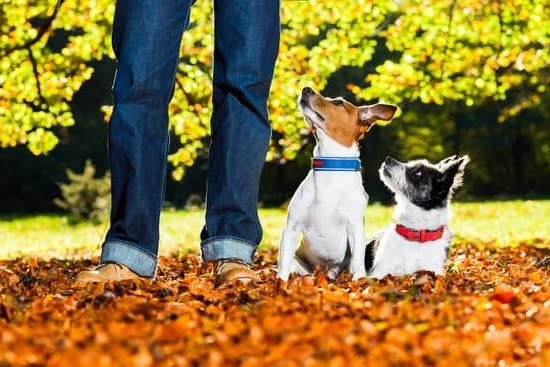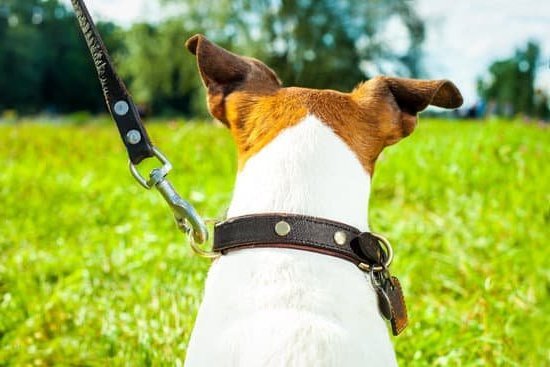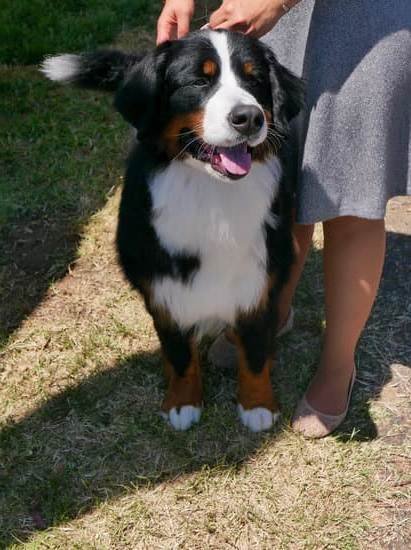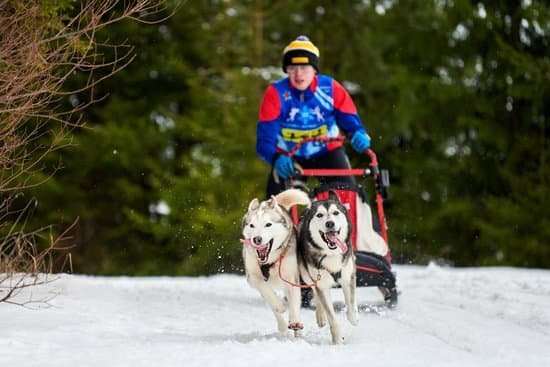Introduction
Training your dog at home comes with some serious benefits. For starters, it saves you money that would otherwise be used to send your pet to a professional trainer. Additionally, it provides the opportunity for you establish a better connection with your dog; you will understand what he needs in order to succeed and can provide him with immediate feedback. Home training is also necessary for the overall health and well-being of your dog– the more trained your pup is, the more confident and comfortable he will become when out in public or interacting with other people and animals.
At-home dog training isn’t difficult– between puppy classes, crate training, clicker training, loose leash walking, housebreaking/potty training, reward-based obedience commands (sit/stay/leave it), and teaching tricks– there are tons of methods pet owners can employ while training their four-legged friend. Puppy classes are especially important because they provide an environment where pups can socialize safely with other dogs and people. Crate training is perfect for acclimating little ones to their new household; it allows them a safe den place to rest and relax while they learn rules within the house. Clicker training helps reinforce positive behaviors in puppies or new adult dogs by rewarding them each time they obey specific commands. Once these initial steps have been completed, working on all other commands such as ‘come’ and ‘leave it’ should be worked on consistently to cement obedience in all situations that might take place within domestic environments or outdoor spaces. Reward-based obedience commands are crucial for disciplining naughty pets without becoming overly harsh; treats work perfectly as positive reinforcement once each command has been properly obeyed by the pup! Finally, teaching fun tricks such as ‘roll over’ or ‘play dead’ are positive outlets for demonstrating behavioral markers such as calmness; these also serve as a form of playtime which helps stimulate active learning within our intelligent furry friends!
Gather Proper Training Supplies
Before you can begin training your dog at home, it is important to gather the proper training supplies. This may include a leash, treats, toys, and clickers (if using positive reinforcement methods). It’s best to pick supplies that are appropriate for the size of your dog. For example, small dogs need smaller leashes and treats than larger breed dogs. If you are unfamiliar with these items, ask a canine professional or do some research online so that you can ensure you have the most effective tools for your pup.
Set Clear Boundaries and Rules
Training your dog at home requires you to set clear boundaries and rules from the start. This can include rules like not jumping on people, waiting for permission before eating treats, or coming when called. It’s important to be consistent with boundaries and rules so that your dog knows what is expected. You can also use positive reinforcement to ensure your pup gets praised whenever they obey your commands or follow the house rules. This will help create a positive experience thereby reinforcing desired behaviors.
When it comes to taking on a pet, creating the right environment is key in making the training process successful. Start by creating specific areas in your home dedicated to different activities such as eating, playing, sleeping and more. This will help teach the pup structure and help them learn their place within the home faster. Make sure that you start any type of formal training only when all other rules have been established — without this foundation, more difficult training may become confusing for the pup later on. During this period using items such as food rewards and praise are extremely effective tools used in training sessions – reward them when they do something correctly instead of punishing them when they make mistakes — this shows trust between you both and helps build an everlasting bond!
Teach Basic Training Commands
Training your dog at home is necessary to ensure your pooch has the proper etiquette and knowledge they need to interact with family, visitors, and other animals. Start by teaching them basic training commands like ‘sit’, ‘stay’, and ‘come.’ Dogs are most motivated with rewards such as treats or affection so make sure you have plenty of either on hand. Use simple words or hand signals without saying anything else when you give the command initially so that the action is associated with just those words or gestures. Practice these commands for several days until they are mastered before introducing others. Make sure to be patient and remember that dogs learn best through positive reinforcement rather than punishment- admitting defeat and rewarding successfully completed tasks is much more effective than becoming frustrated when mistakes are made. If a command is forgotten during training, do not repeat it; instead take a few steps back in your training program and reteach the original response using rewards for correct behavior.
Utilize Positive Reinforcement Techniques
When training any dog, positive reinforcement techniques are the best approach. These techniques focus on rewarding good behaviors rather than punishing bad behaviors. Trainers can use a variety of rewards such as verbal praise and treats to positively reinforce desired behaviors. An effective technique is to offer a treat after the dog has completed the desired behavior. Dogs love praise and it encourages them to continue the behavior that is being rewarded. Additionally, commands should be kept simple so that the dog can easily understand what is expected of him/her. As the dog learns more commands, different treats can be used for each desired behavior. When using positive reinforcement techniques, it is important not to overcorrect or overreact when teaching your pet new tasks or correcting unwanted behaviors. Keeping a calm and confident demeanor while training will show your pet that you are in control, while simultaneously providing reassurance in their abilities to succeed in mastering new tasks.
Deal with Common Unwanted Behaviors
One of the most important aspects of training a dog is to address and deal with unwanted behaviors. It is important to catch them early, as an annoying or destructive behavior can become reinforced if left unchecked. The first step is to identify those behaviors that you do not want your dog to exhibit. Common undesirable behavior includes excessive barking, destructive chewing, digging holes, jumping on furniture, and not coming when called.
Once identified, any undesired behaviors need to be addressed quickly and consistently every time they occur. A variety of techniques can be used including crate training, verbal reprimands, providing distractions such as toys/treats, positive reinforcement (e.g., praise), or obedience training classes. Any disciplinary actions should remain consistent and must not be overly aggressive or harsh as these can create a damaging situation between the dog and owner. Lastly, reward desirable behavior with treats and verbal encouragement whenever possible – this will help the dog learn what behaviors are acceptable in your household.
Monitor Your Dog’s Progress and Set Goals
Once you begin to train your dog at home, it is important that you keep track of their progress. It is good practice to set yourself goals that can be broken down into smaller steps over time. This way, you will have a good indication of what areas they are excelling in and where they need more work. Keeping track of your dog’s progress also gives them a sense of accomplishment, showing them that they are learning and making improvements. Rewarding them with praise and treats each time they reach a goal can be effective in reaffirming this. Additionally, if your dog isn’t reaching the goals that you have set within a reasonable time frame, it might be beneficial to review the training style or play around with different methods until you find an approach that works for both of you.
Make Training Fun and Enjoyable
When training your dog at home, it’s important to keep the experience fun and enjoyable for both you and your pup. Positive reinforcement is key for keeping a successful, stress-free training environment. Rewarding your dog with treats, verbal praise, or even a game of fetch or tug-of-war can help reinforce desirable behaviors and discourage unwanted ones. Additionally, be sure to build in plenty of breaks during your training sessions to give your pup time to regroup. This not only helps prevent boredom but also allows time for distractions such as the doorbell ringing or a squirrel outside the window to subside. Further, incorporate specific commands into everyday activities like walks and mealtime, so your dog can practice good behavior throughout the day.
Overcome Training Challenges
One of the biggest challenges when it comes to training a dog at home is establishing a consistent routine. If your dog is not used to following a daily schedule, they will likely be confused when you come to teach them commands. To get started, decide on one or two commands that you would like your dog to learn and then stick with them. Be sure to practice these commands in different areas around the house and in different scenarios, such as when visitors are present and during walks. Additionally, be sure to reward your pup for good behavior with treats or verbal praise.
It can also be difficult for some owners to remain consistent with their training and patience can sometimes run thin if progress isn’t made quickly enough. It’s important to remember that all dogs learn at different paces, so don’t let yourself get discouraged if it takes longer than you’d hoped for your pup to master the command. Instead, try breaking down training sessions into more manageable chunks so that you can keep your pup interested and engaged in learning during each session. Additionally, it helps to set realistic goals for yourself, rather than expecting too much of your pup (or yourself!) too soon. Finally, don’t forget that consistency is key – make sure that you are practicing the same commands in the same way multiple times per day until they have become automatic reactions from your pup!
Recognize Your Dog’s Milestones and Achievements
Training your dog at home is an incredibly rewarding experience. It’s also one of the best and most important things you can do as a pet owner. Aspiring pet owners should realize that training a dog requires a lot of patience, consistency, and dedication.
When training your dog at home, it’s important to recognize their milestones and achievements throughout the process. Celebrate successful moments with positive reinforcement and resilience when facing setbacks. Positive reinforcement such as verbal or physical praise, treats, or extra playtime will encourage good behavior while discouraging any undesirable traits. This can be particularly helpful in teaching house rules to dogs that have never had them before. Additionally, make sure to only use rewards when your pup has fully completed the task correctly in order to reinforce good behaviors correctly.
Routine is key in any successful training program; establish specific times for lessons and daily exercises like walks so that your dog knows exactly what’s expected of them each day. Working on new skills frequently during short sessions can help keep the exercise interesting for both of you– Studies show shorter periods of repetition are more effective than long drawn-out ones. Additionally, incorporate fun activities into each session– These are vital for keeping spirited dogs engaged and allow them to stay tuned in during lessons instead of becoming bored with repetitive tasks.
Conclusion
The path to a well-trained dog begins at home. Training your pet properly requires patience and consistency, but the rewards will be worth it. With just a few basic steps, you can start building a solid foundation for a lifetime of successful training experiences with your pup.
Start by introducing simple commands like sit and stay. Schedule regular training sessions to prevent boredom and ensure that your dog remains motivated. Reward them with treats and verbal praises when they obey commands or perform the desired behavior. Incorporate the use of distractions in the environment so that your pup can retain his focus even when there are other stimuli present. Finally, set clear expectations for both yourself and your pet to maintain consistency throughout their development.
By following these steps and committing to regular reward-based training sessions, you will be able to develop an obedient and well-behaved dog that is happy and secure; one that won’t act out due to fear or insecurity, or disrupt its environment or other humans or animals around him/her. Creating this strong foundation from home-training will give you the advantage of having firm communication channels since the beginning which leads to more successful overall training results in any situation outside the home. It might take longer than traditional methods such as crate-training or shock collar use, but the end goal of having a trustworthy companion is worth it – one that will have had a solid foundation from home training that has been developed over an extended period of time!

Welcome to the blog! I am a professional dog trainer and have been working with dogs for many years. In this blog, I will be discussing various topics related to dog training, including tips, tricks, and advice. I hope you find this information helpful and informative. Thanks for reading!





